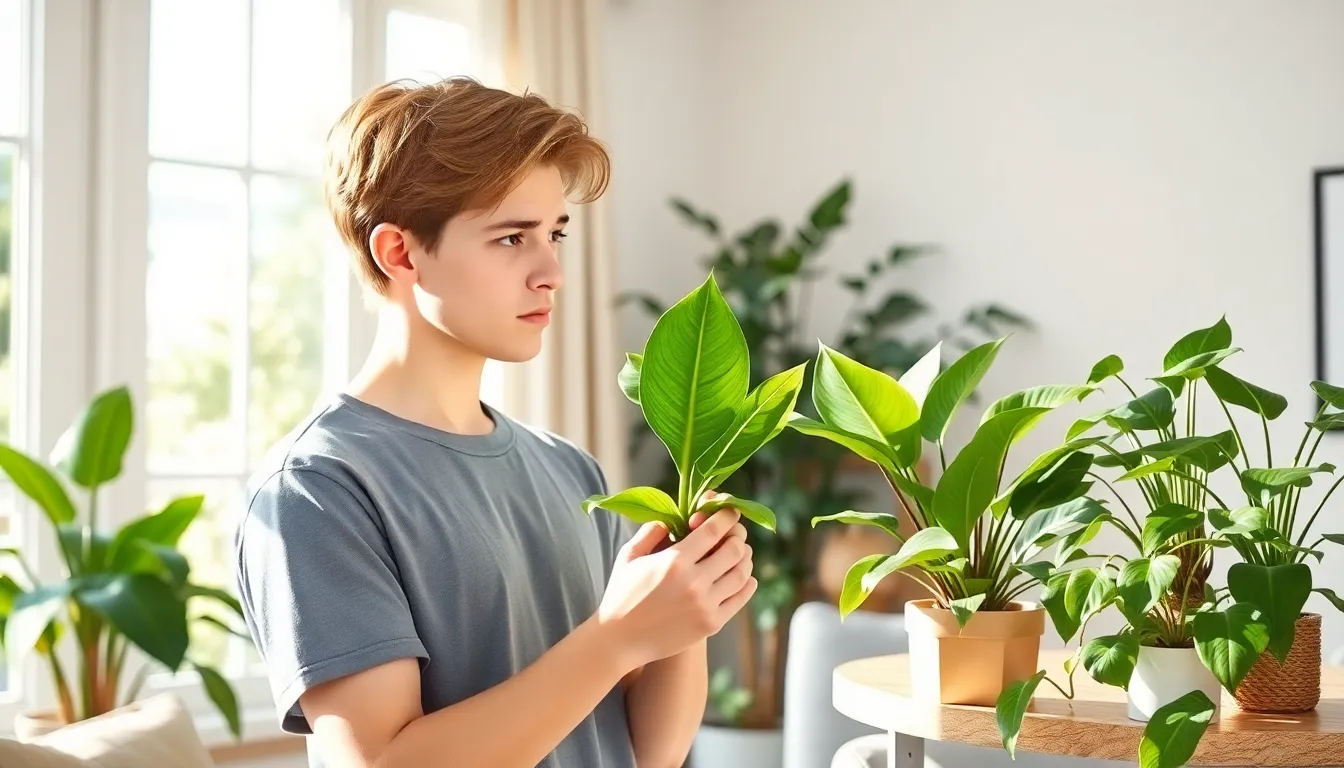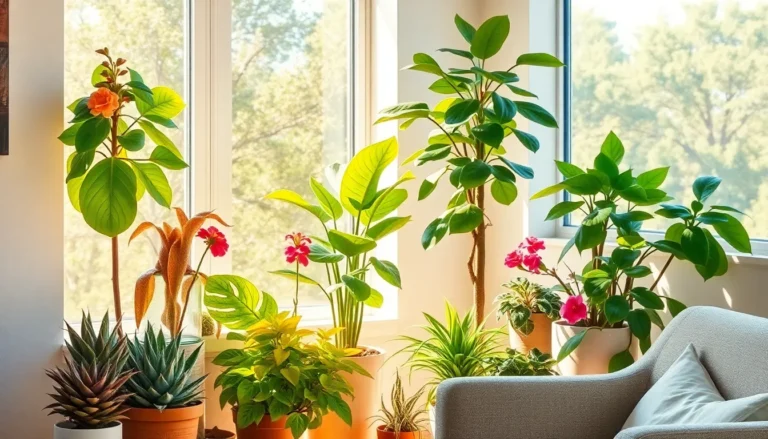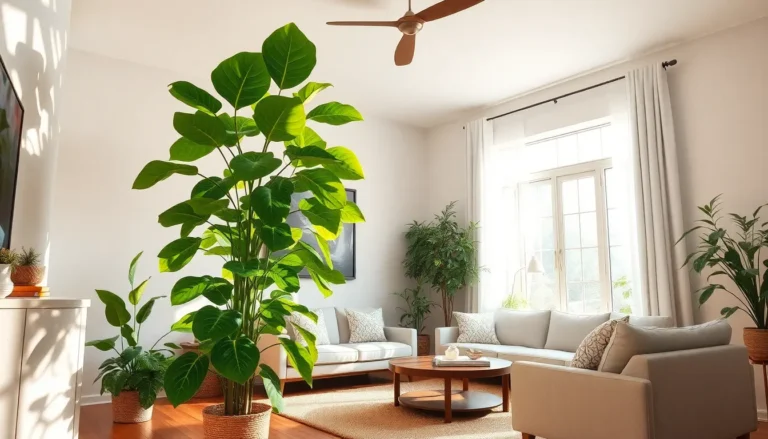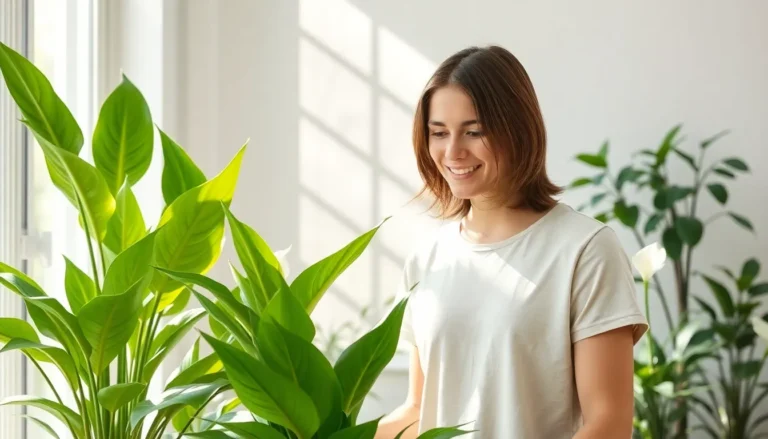Indoor plants can transform a space from drab to fab, but not all greenery is created equal. For allergy sufferers, some plants might as well be tiny, leafy villains plotting to ruin their day. Imagine sneezing your way through a beautiful living room, all thanks to that innocent-looking fern in the corner.
While plants can purify air and boost mood, certain species can trigger allergies and make life miserable. From pollen-producing powerhouses to moldy mischief-makers, it’s essential to know which plants to avoid. Let’s dive into the world of indoor plants that might just be the worst offenders for those with allergies, ensuring your home remains a haven and not a sneeze-fest.
Worst Indoor Plants for Allergies
Allergies result from the immune system reacting to substances like pollen, dust, and certain chemicals. Individuals with allergies often experience symptoms such as sneezing, itching, and difficulty breathing. Indoor plants can contribute to these issues when they release pollen or emit volatile organic compounds (VOCs).
While some indoor plants improve air quality, others exacerbate allergy symptoms. Common allergens include mold and dust that grow on plant soil or foliage. Certain indoor plants known for high mold potential include peace lilies and pothos. These plants can trap moisture, creating an ideal environment for mold growth.
Additionally, flowering plants, such as chamomile or geranium, often release pollen. Allergic reactions may occur when this pollen disperses into the air. Foliage plants, like rubber trees and fiddle-leaf figs, can shed leaves, adding dust to the environment.
Research indicates that some individuals develop allergies from specific plants over time. It is essential to identify those that cause reactions. Non-toxic plants with low allergenic properties include snake plants and spider plants. These species generally produce fewer allergens and can thrive without excessive care.
Understanding the relationship between allergies and indoor plants aids in selecting the right varieties for a living space. By avoiding high-pollen and mold-prone plants, individuals can minimize allergy symptoms while still reaping the benefits of indoor gardening.
Common Allergens in Indoor Plants
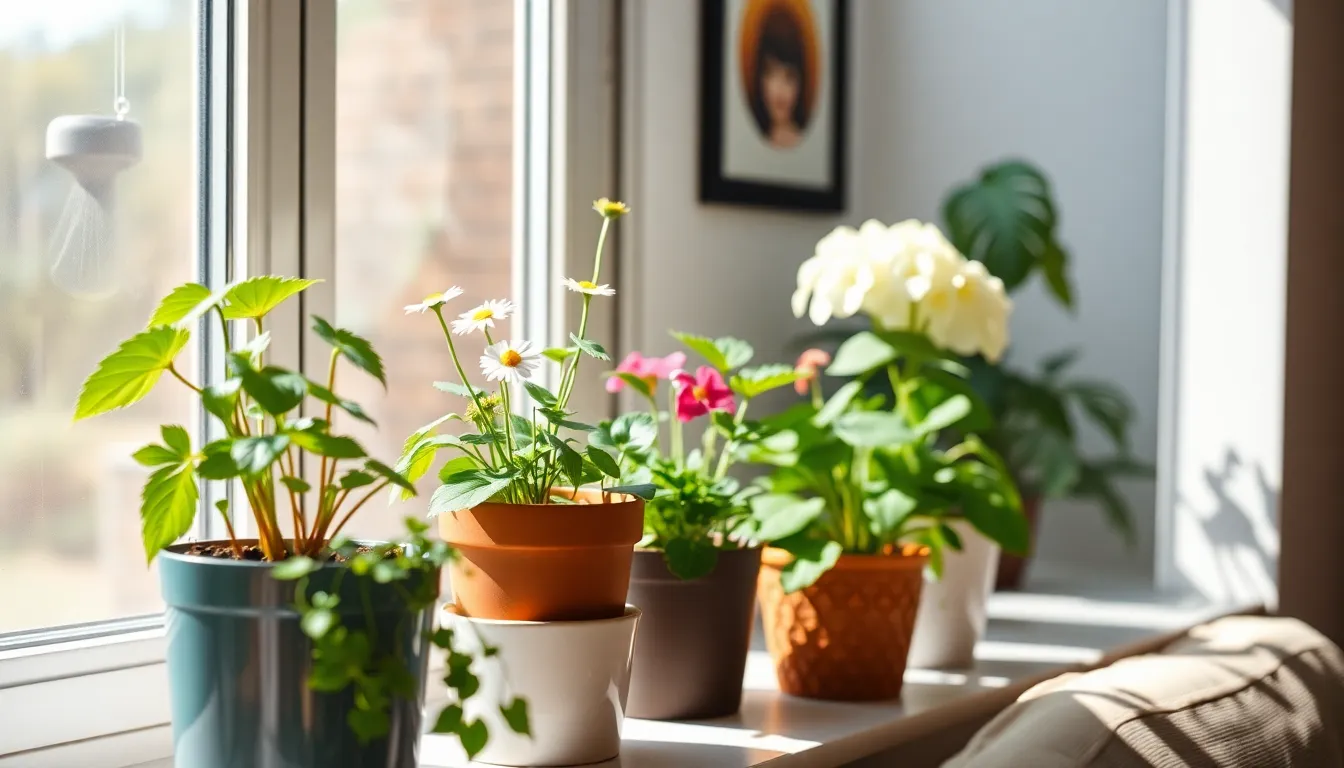
Understanding common allergens in indoor plants helps individuals select suitable species for their homes. Certain plants can release allergens that may trigger symptoms in sensitive individuals.
Pollen-Producing Plants
Pollen-producing plants are significant contributors to indoor allergies. Chamomile and geranium, for example, produce substantial amounts of pollen, making them unsuitable for many allergy sufferers. Other plants such as orchids and lilies also release pollen, exacerbating respiratory issues. Avoiding plants known for high pollen levels ensures a more comfortable living environment. Some individuals may experience heightened reactions during specific seasons when pollen levels rise.
Mold and Mildew Concerns
Mold and mildew pose additional challenges for allergy sufferers. Many indoor plants can accumulate moisture, particularly in their soil, leading to mold growth. Peace lilies and pothos often harbor mold due to their moisture-retentive characteristics. Regularly replacing soil and ensuring proper drainage can help mitigate these concerns. Dust accumulation on plant leaves can also contribute to mold. By maintaining clean foliage and monitoring moisture levels, individuals can reduce the risk of mold-related allergy symptoms.
Worst Indoor Plants for Allergies
Certain indoor plants pose significant risks for allergy sufferers. Identifying these species plays an essential role in maintaining a healthy indoor environment.
Specific Plant Species to Avoid
Avoid peace lilies due to their high mold potential, which can worsen allergy symptoms. Pothos plants also contribute to mold growth, particularly in damp conditions. Flowering plants like chamomile and geranium release significant amounts of pollen, increasing allergic reactions. Rubber trees and fiddle-leaf figs shed leaves, creating dust accumulation in homes. Additionally, orchids can produce lightweight pollen that travels easily through indoor air. These plants all serve as triggers for allergy symptoms, making them unsuitable for sensitive individuals.
Symptoms Triggered by These Plants
Sneezing often occurs when individuals encounter pollen from flowering plants. Coughing could arise from airborne particles produced by indoor foliage. Itching and watery eyes frequently accompany exposure to common allergens found in plant soil or leaves. Breathing difficulties may result from mold spores released by moisture-retentive plants. Skin irritation sometimes follows contact with certain foliage, such as rubber plants. Each of these symptoms represents the body’s response to allergens commonly found in indoor plants.
Tips for Choosing Allergy-Friendly Plants
Selecting allergy-friendly plants requires careful consideration. Firstly, opt for non-flowering varieties. Non-flowering plants produce minimal pollen, reducing allergy triggers.
Look for plants with low VOC emissions. Species such as snake plants and spider plants emit fewer volatile organic compounds, contributing to a healthier indoor environment. Choose plants known for their air-purifying qualities. This feature benefits those with respiratory issues.
Evaluate plants for mold resistance. Avoid moisture-retentive types that foster mold growth, such as peace lilies and pothos. Prioritize species with thick, waxy leaves, as these types are less likely to accumulate dust and mold.
Consider the overall maintenance of the plants. Low-maintenance options ease care routines, minimizing the potential for allergens from dust and dirt buildup. Research plant origins for additional insights into allergy potential. Certain plants may cause sensitivities over time.
Inspect plant soil before purchase. Soil with proper drainage reduces mold risk. Avoid plants with overly damp soil, as this contributes to mold development. Shopping from reputable nurseries can ensure the quality of the plants and their soil.
Incorporate plants that naturally resist pests. Insect infestations can provoke allergic reactions for some individuals. Look for plants with natural pest-repellent properties, aiding in maintaining a healthier indoor space.
Consider the plant’s location within the home. Placing plants in areas with good airflow helps reduce humidity and lowers moisture levels that attract allergens. Stick to spaces where regular cleaning occurs, further preventing allergen accumulation.
Conclusion
Choosing the right indoor plants is crucial for maintaining a comfortable living space, especially for allergy sufferers. By avoiding plants known to trigger allergies, individuals can create a healthier environment. It’s essential to consider factors like pollen production and mold growth when selecting plants.
Opting for low-allergen varieties not only enhances air quality but also reduces allergy symptoms. With careful consideration and informed choices, anyone can enjoy the benefits of indoor gardening without compromising their well-being. Prioritizing allergy-friendly plants ensures a pleasant atmosphere for everyone in the home.

